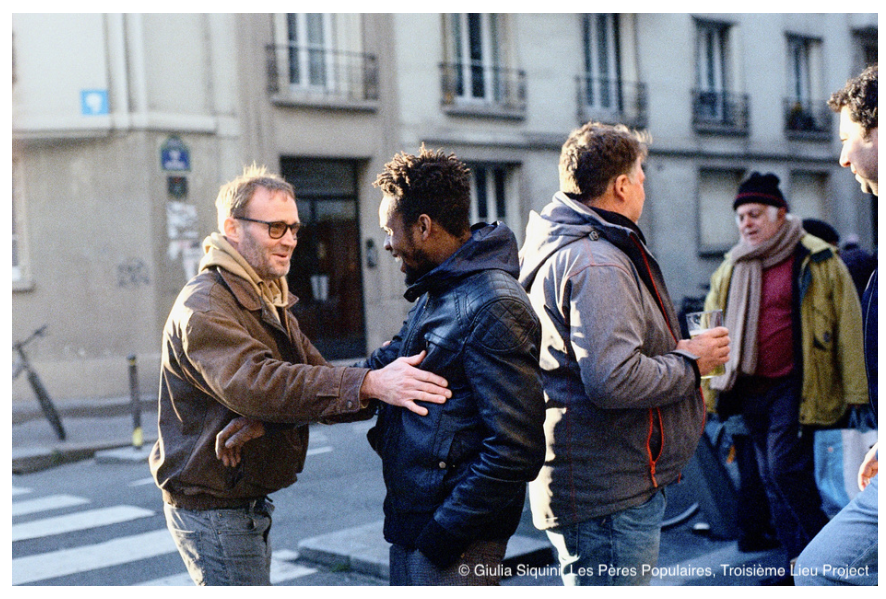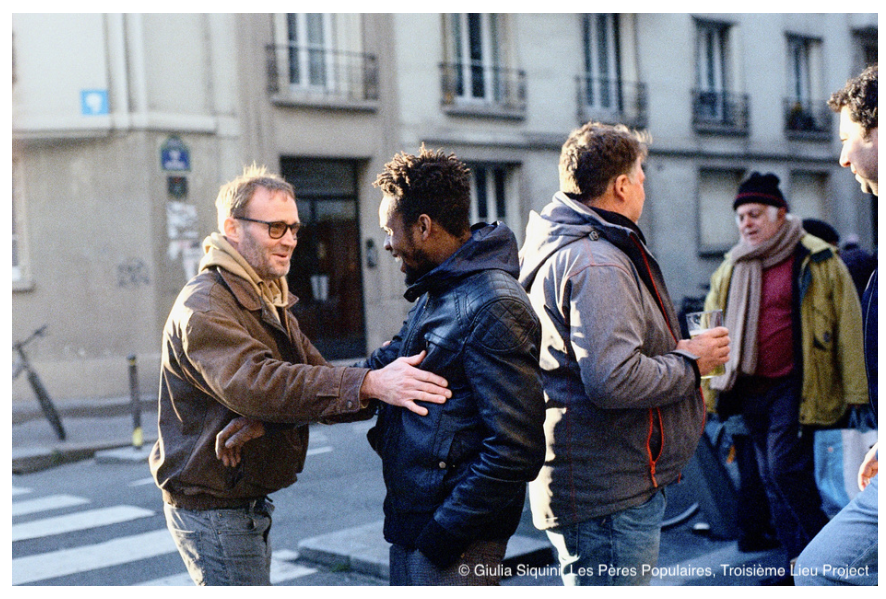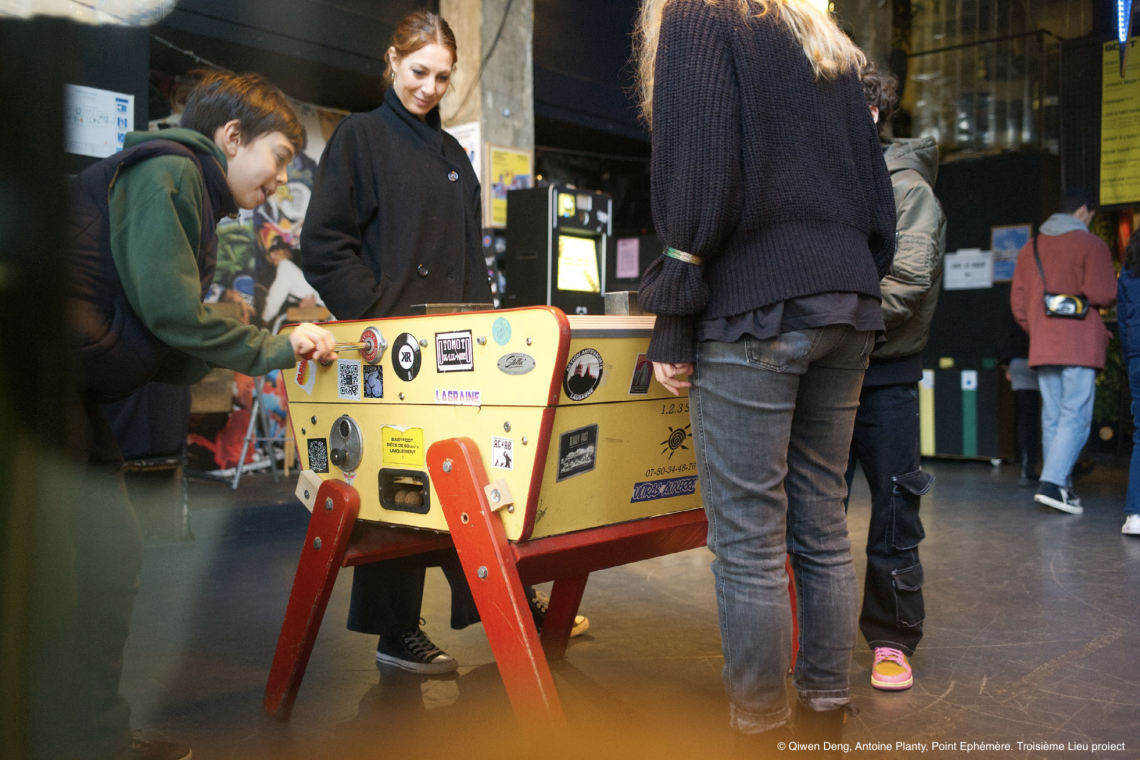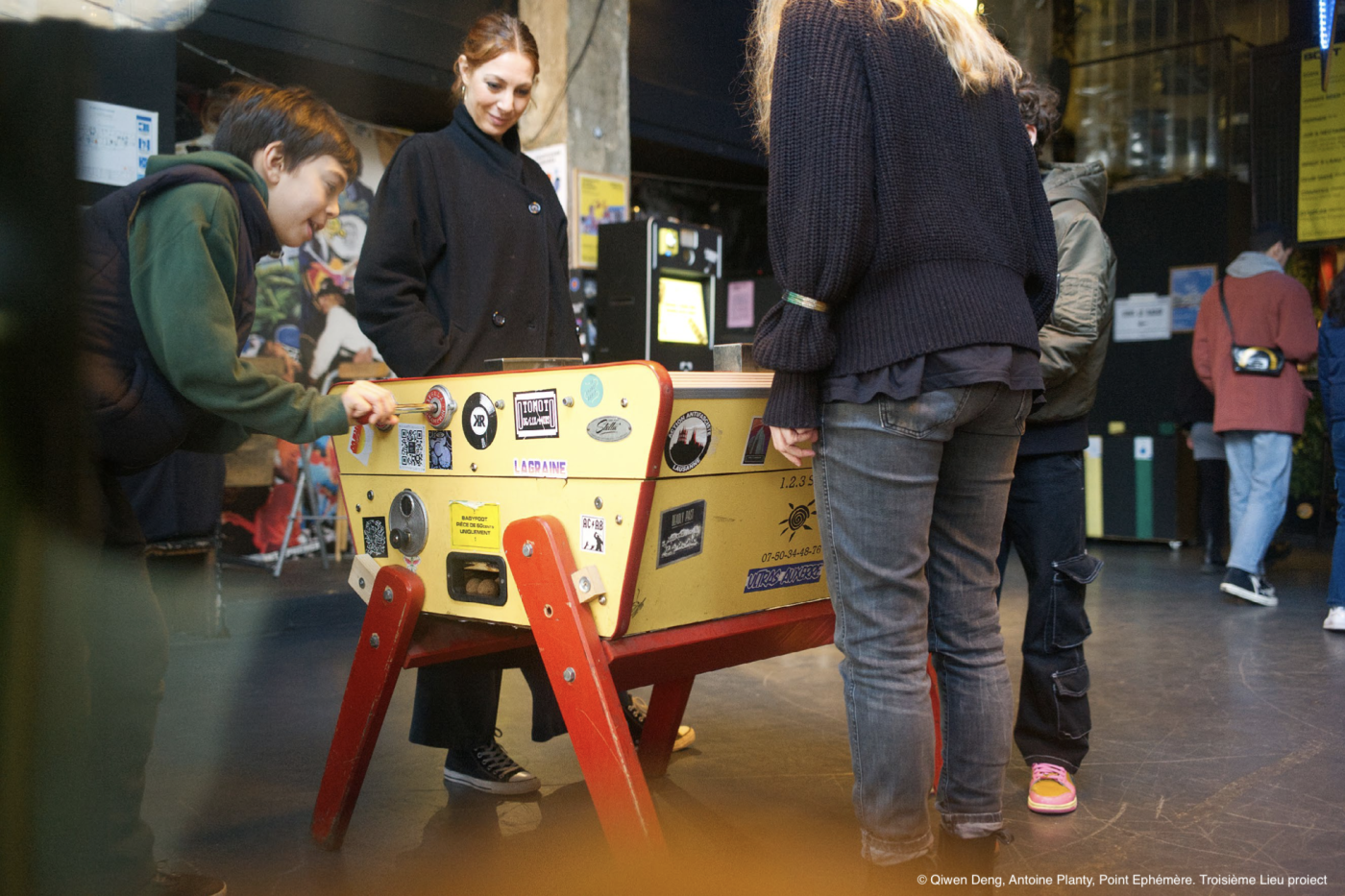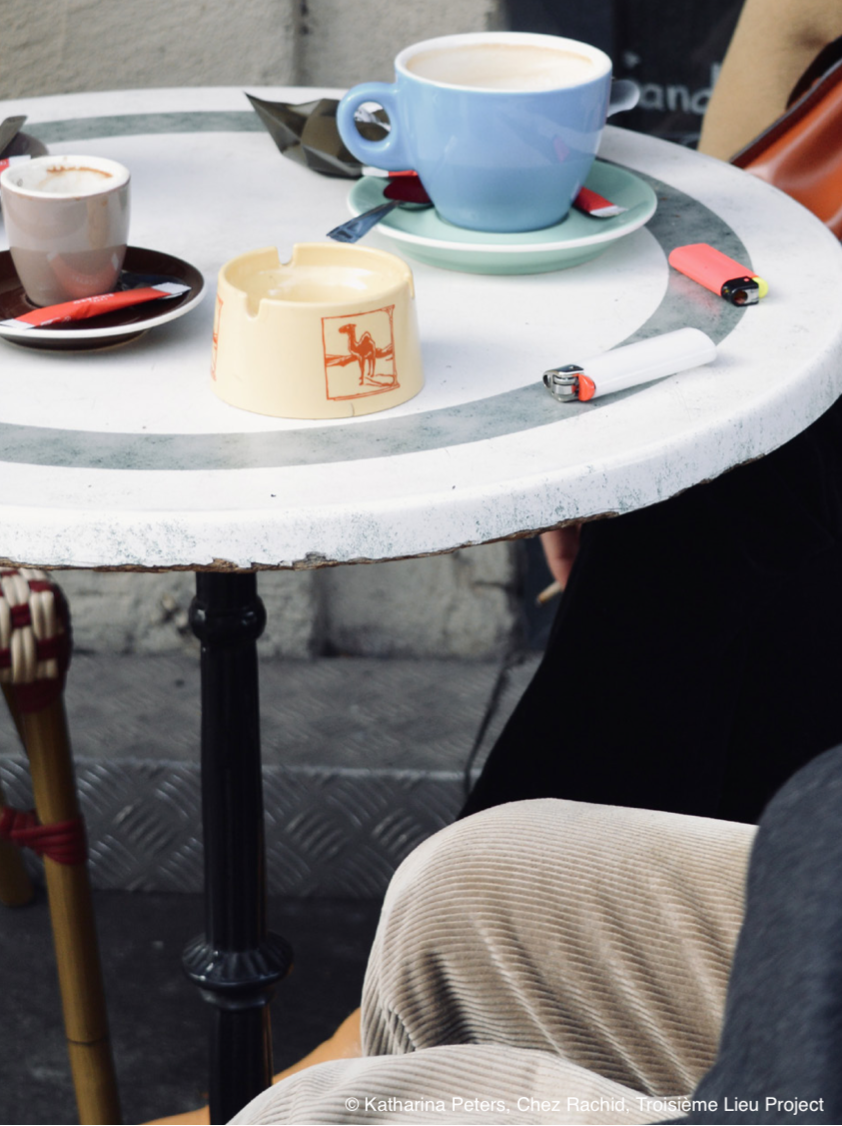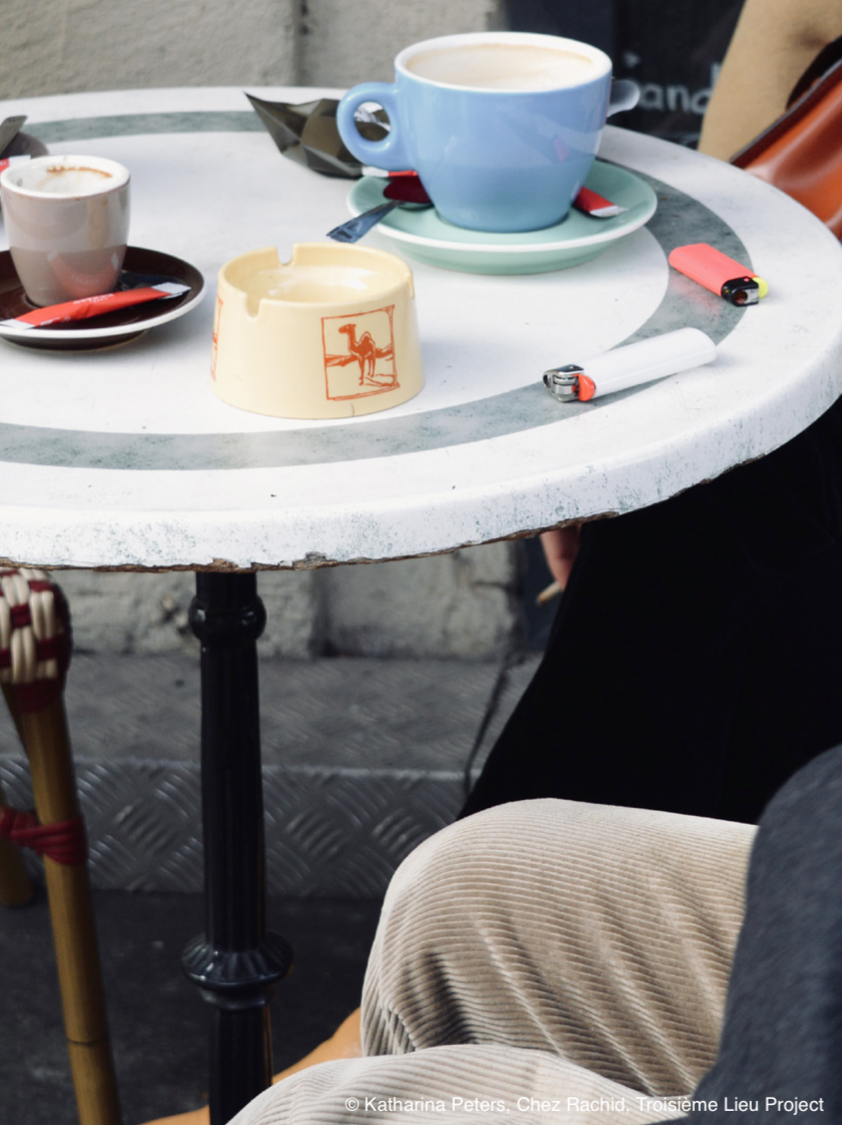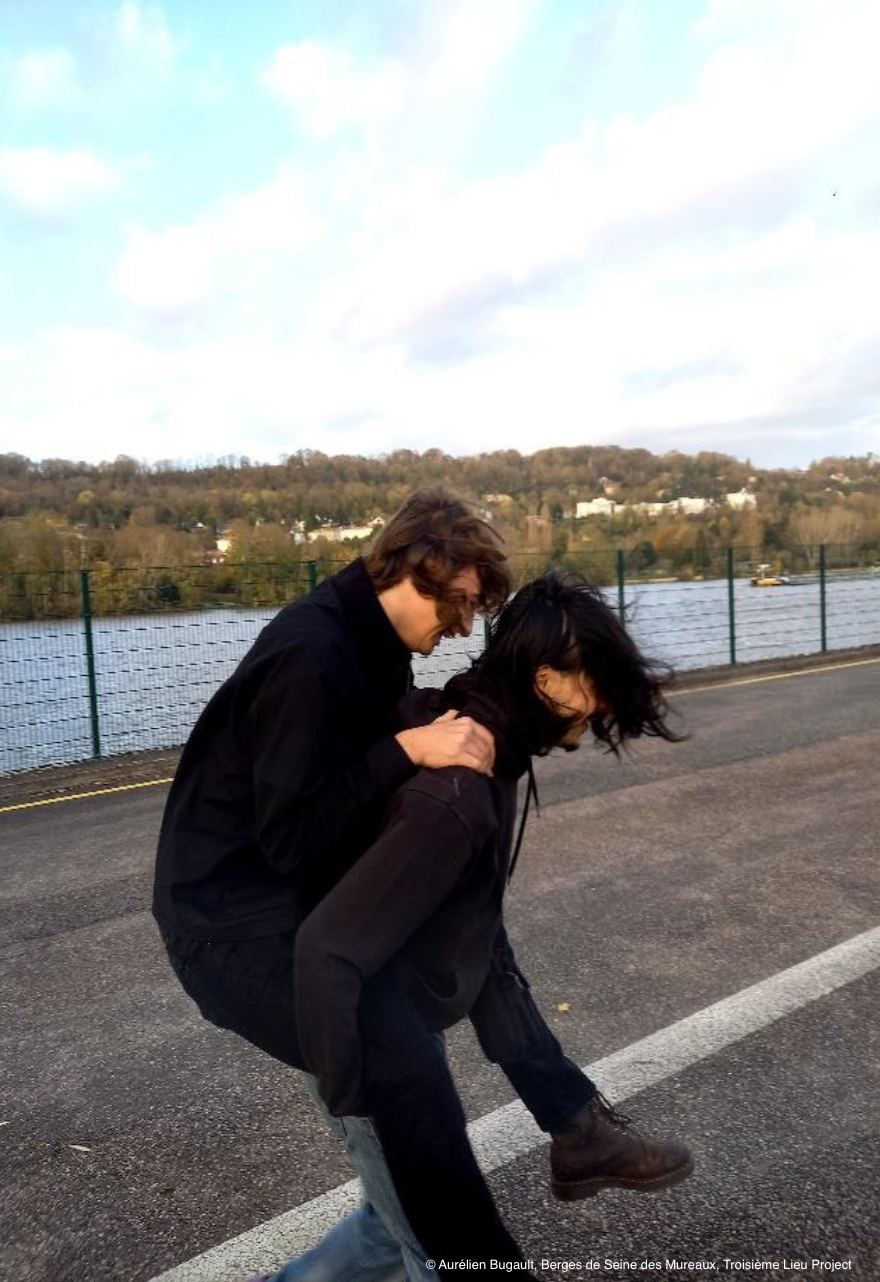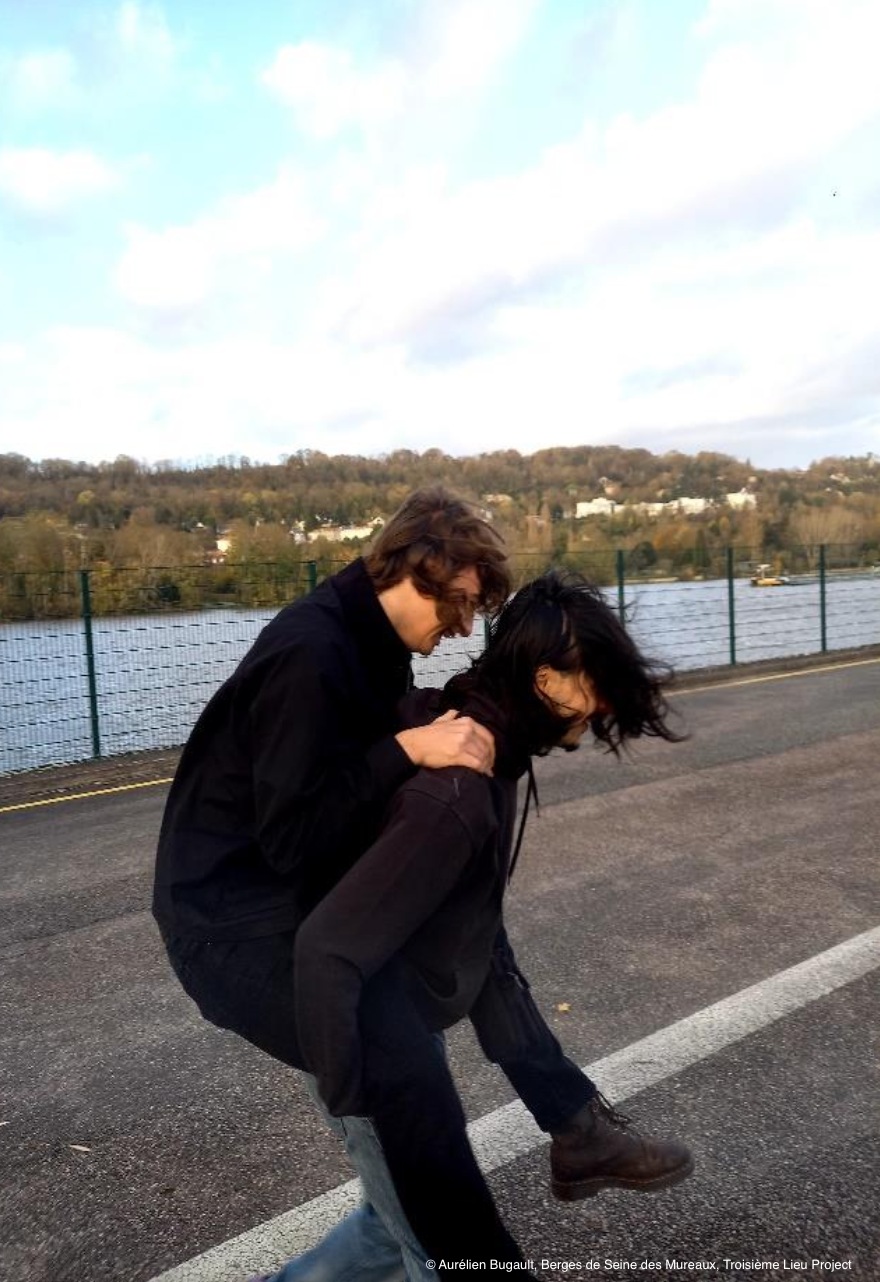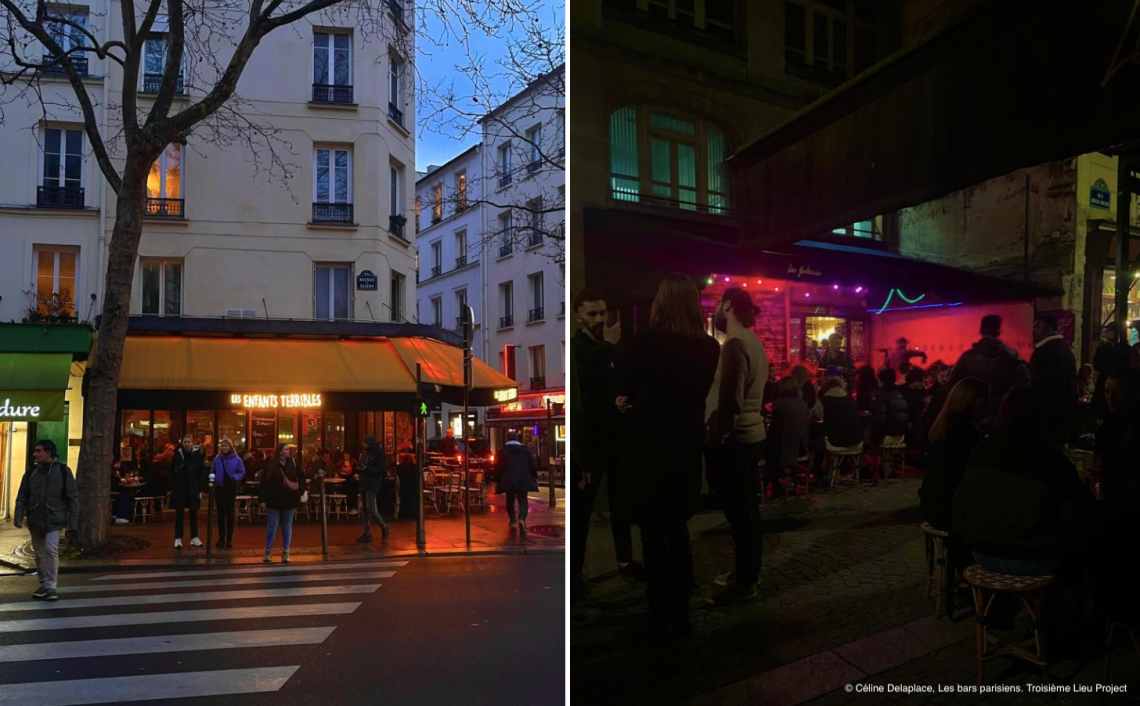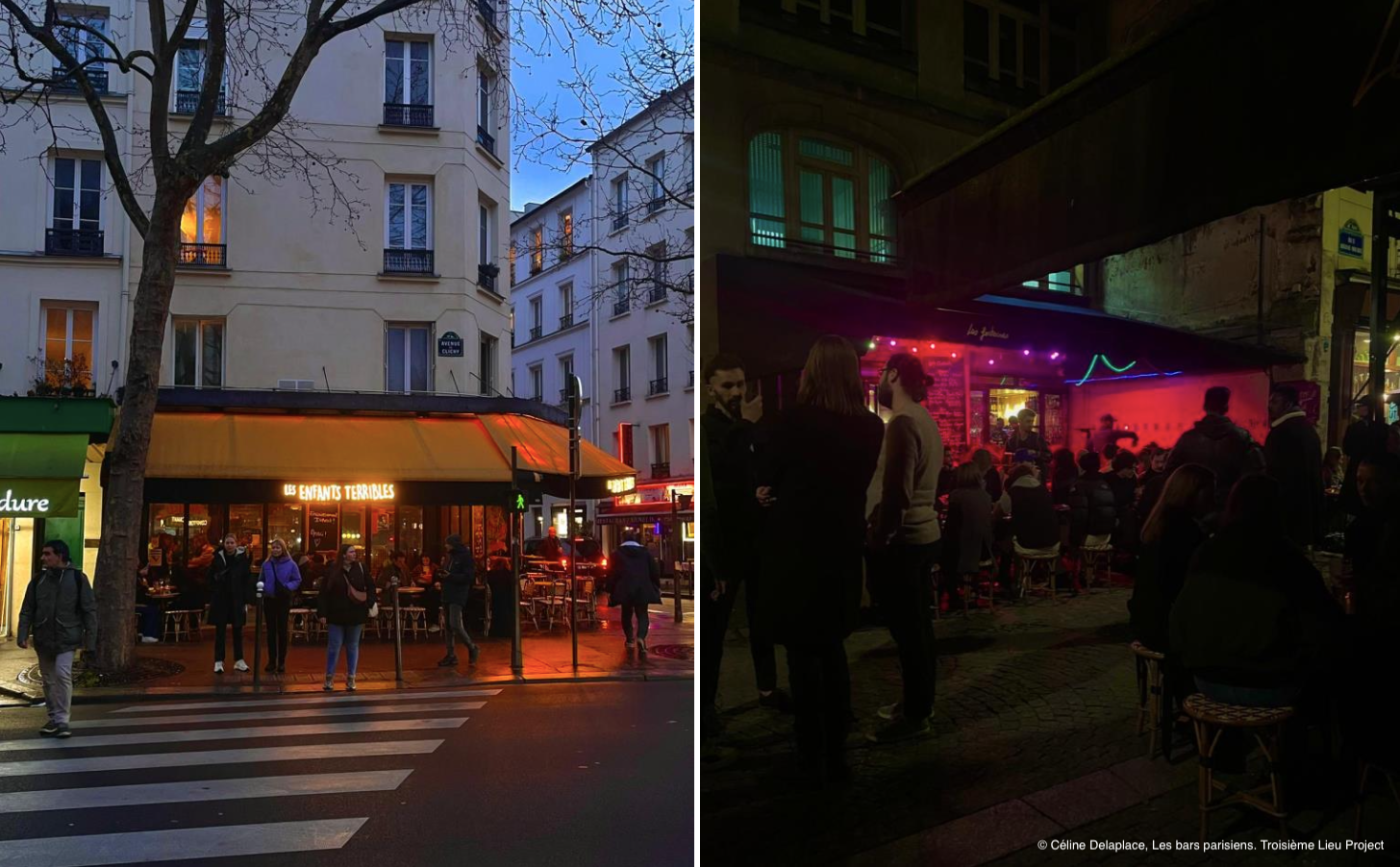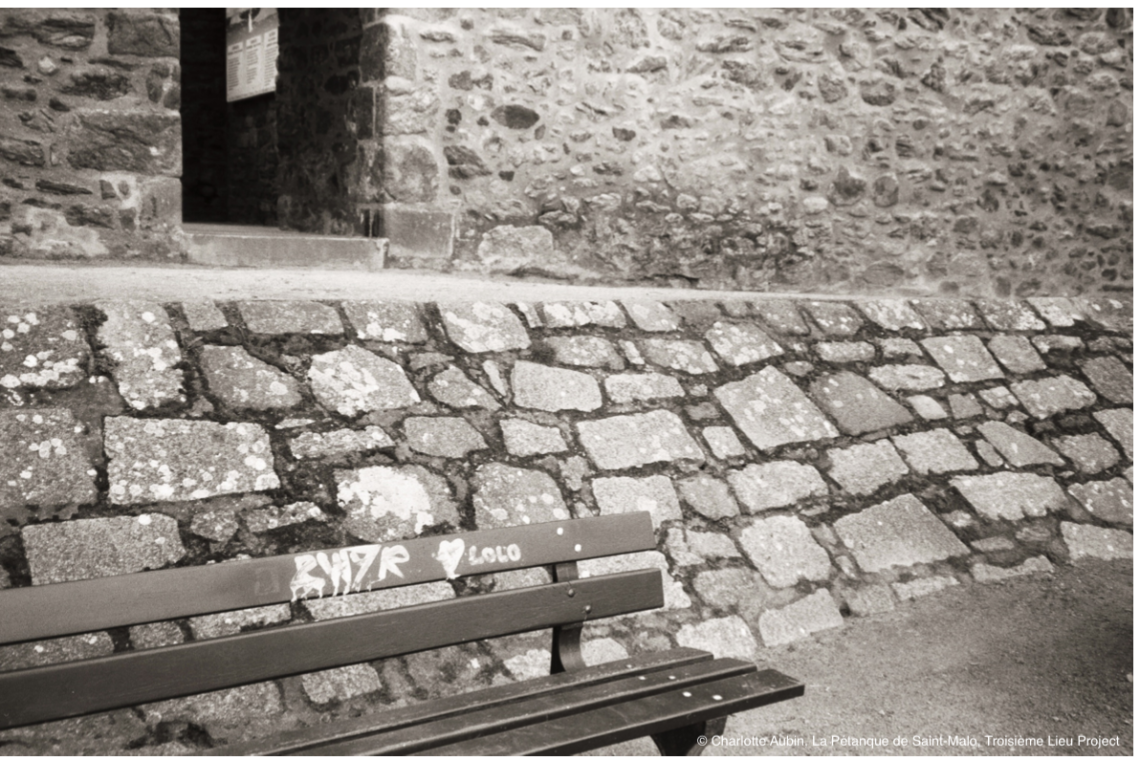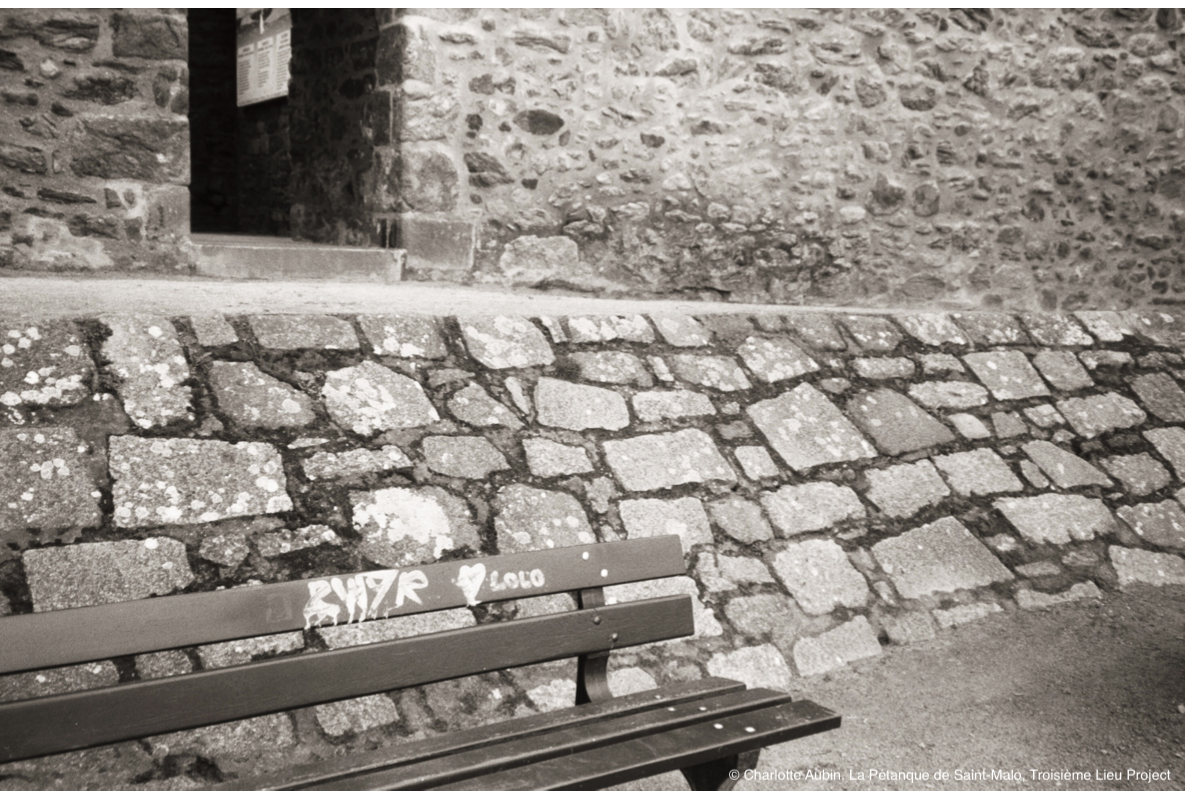The Third Place Project: spaces of conviviality as a form of urban heritage?

The Third Place Project: spaces of conviviality as a form of urban heritage?
Click here to read the French translation of the article.
_
Loneliness and sociability: a question of design?
Loneliness in cities, particularly in Europe and North America, has become an increasingly pressing topic among urban planners and practitioners, researchers, as well as local and national institutions, health experts, and the general press. The “loneliness epidemic” (hence named since the U.S. Surgeon General’s Advisory of 2023) is worrisome for many, as research at the frontier of urban studies and psychiatry seems to point at a strong correlation between city life and mental health issues. Space, or rather the lack thereof, seems to be a contributing factor.
Most of the existing articles and emerging projects and initiatives are focused on suggesting design-based solutions to the problem: how do we plan more community-friendly cities? How do we design public space so to encourage sociability and interactions? What is the “healing” power of green spaces? How to create accessible, mixed, and comfortable areas in neighborhoods? Basically: what can urban planning and design do to tackle loneliness, stress, and alienation?
At the urbz Paris office, our conversations on city loneliness have made us question the hypothesis of the intrinsic and spatial nature of the problem: cities are not lonely by nature or morphology. Because of their density and variety of environments, cities offer occasions and settings for encounter and sociability that the countryside can’t provide. Although the hyper-fast and dense urban life can be alienating and lonely, historically cities around the world have displayed a variety of spaces which people appropriate for sociability, conversation, exchange, encounter, and urban dwellers have adapted to find such spaces and moments to get together… so why this sudden need to invent and engineer new forms and designs?
urbz strongly believes in the importance of recognition in urban practice: as planners and designers, we are increasingly preoccupied with creating new spaces and urban forms, but do we take a good enough look at what is already there? What if, before we reinvent urban sociability, we recognized, protected, and valued the spaces of togetherness that already exist? What can we learn from these ordinary but long-lasting social settings? And lastly, shouldn’t we look at these places from the point of view of their users?
Third places: our core settings of sociability
We decided to brush up on the concept of third place, by re-reading Ray Oldenburg’s 1989 The Great Good Place. A critique of suburban America, and in many ways a nostalgic and probably idyllic depiction of European cities, the book points at the need, in each neighborhood and for every community, for accessible “core settings” of sociability, distinct from the spaces of home (first place), and work (second place). He calls third places “a great variety of public places that host the regular, voluntary, informal, and happily anticipated gatherings of individuals beyond the realms of home and work.” Without such ordinary spaces, individuals as well as communities get impoverished with non-negligeable political consequences (as later reiterated by Robert D. Putnam’s 1995 essay Bowling Alone: America’s Declining Social Capital).
The book reminded us that the debate about urban loneliness was not so new: in the late 80s in America, 30 years before the Covid19 pandemic, Oldenburg and his contemporaries were already concerned with urban environments that did not allow for a more community-oriented living, and with societies turning to a more lonely, individualistic lifestyle, where only the most affluent can afford some forms of stress-relief. Oldenburg wrote: “In the absence of an informal public life, Americans are denied those means of relieving stress that serve other cultures so effectively. We seem not to realize that the means of relieving stress can just as easily be built into an urban environment as those features which produce stress. (…) While Germans relax amid the rousing company of the bier garten, or the French recuperate in their animated little bistros, Americans turn to massaging, meditating, jogging, hot-tubbing, or escape fiction. While others take full advantage of their freedom to associate, we glorify our freedom not to associate. (…) The cosmopolitan promise of our cities is diminished. Its ecumenic spirit fades with our ever-increasing retreat into privacy.” If Oldenburg saw the issue as essentially American, today his words probably echo as relevant in cities all over the world.
Although we agree with Oldenburg on the importance of social connections and community life, we refuse to take a nostalgic stance on the topic. Perhaps not in all neighborhoods, and maybe they are indeed less and less present, but we remain convinced that spaces of sociability, conversation, and togetherness still naturally exist, in some forms, in cities around the world, and maybe we do not talk about them enough. Maybe we do not see them because we haven’t been asking the right people: their regular users. So, we decided to take a closer look at them: what are the specific settings that help us city-dwellers fight loneliness, get together, connect with our friends, and feel part of a community? What are our third places?
Places of sociability, friendship, and togetherness: a new category of local heritage?
With the help of urbanists, friends, students, artists… we started in 2024 the Third Place or Troisième Lieu Project (a literal translation to French of Oldenburg’s concept[1]): an ongoing participatory inquiry aimed at discovering and recognizing the existing third places through the eyes of their regular users. Starting in Greater Paris where we are based, and expanding to other cities and environments, we ask fellow city-dwellers to tell us (through workshops, interviews, recordings, photos, texts, poems…) about their own favorite third place: a place they go to regularly, where they feel comfortable, and where they meet up with friends or socialize with people. Then we will narrate them through creative productions: fanzines, fictions, illustrations, podcasts, short films…
Cafés, local bars, bistros… the typology of third places that Oldenburg was primarily referring to, are strongly represented. But through the eyes of the users, we have been discovering endless forms of third places: people also mention squares, riverwalks, parks, pétanque strips, benches, public baths, gaming rooms, swimming pools, sport facilities… places that matter to them as regular settings of exchange, sociability, and friendship. They seem ordinary to an external eye, but if one looks closer, they have a special meaning for someone, because they represent the landscape and core setting of part of their social lives. Their significance might be invisible or overlooked by passers-by, institutions, municipalities, or urban planners, but for their regular users, their value is immense. Their friendship value or sociability value, as we could call this form of use value, makes them “homes away from home” to some people, vital for their individual well-being, and precious for a city and neighborhood’s public life.
We wonder whether these existing places get the attention they deserve in planning projects and public policies: a place’s friendship or sociability value is difficult to perceive, quantify or analyze, but it is very tangible for individuals and communities. Could places that constitute important settings of our social realm, and thus contribute to our mental and physical health, be considered as heritage, worthy of recognition, support, and protection? Can we define a new category of local heritage, linked to friendship, sociability, community, and “togetherness”?
/ the first troisième lieu fanzine is coming out in the summer. Available in print in some of our favorite third places in Paris (or on demand!). (In collaboration with Lucie Mesuret and Camille Boisaubert).
/ want to tell us about your special third place? write to us at 3e.lieu@urbz.net
/ we'd like to thank the Paris VIII students of the class "Art, culture et projet urbain", from the Master's Degree "Politiques et Gestion de la Culture en Europe", who realized photo-journals of their own third places, and whose images have been used to illustrate this article. Thanks to our talented friend Arthur Crestani who followed the project with us.
/ thanks to our friends and fellow Greater Parisians for our conversations and interviews about their third places.
/ project logo by Alma Dubois.
[1] Note that the notion of tiers-lieu (the original and widely spread French translation of third place, increasingly recognized by French institutions) has come to refer to hybrid, associative spaces of collective production, cultural programming, experimentation in governance and participatory urbanism. Although they do offer room for sociability, and could be someone’s third place, the concept of third place we are exploring is broader: that is why we propose an alternative French translation for this project.
